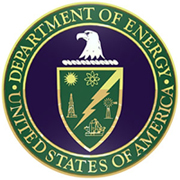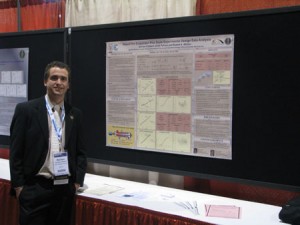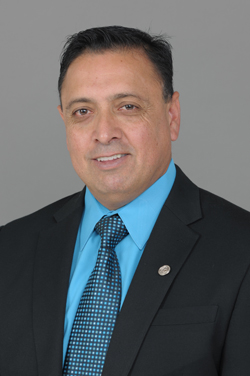Mr. Calderin graduated with a Bachelor’s degree in Nuclear Engineering in 2006 from Havana, Cuba, after which he started working as a junior physicist at the Cardiovascular Institute of Cuba. Motivated by the benefits and beauty of freedom, Duriem decided not to return to Cuba during a nuclear medicine training course in Costa Rica, sponsored by the International Atomic Energy Agency (IAEA). He sought help from the Cuban American National Foundation through a program called “Barrio Afuera”, which helps Cuban physicians and medical field personnel to enter the United States. Duriem finally landed in his new home in the US on July 27, 2007 to begin a new life.
In 2008, Duriem entered the Biomedical Engineering Program at Florida International University as a graduate student. In October of the same year, Duriem applied and was selected into FIU-ARC’s DOE-FIU Science and Technology Workforce Development Program (a workforce development program established by US DOE and FIU-ARC). The DOE Fellows Program at FIU gave him the opportunity to participate in DOE-EM applied research projects in the field of Health Physics (HP). Duriem’s main task entailed demonstration and evaluation of an innovative technology developed by DOE’s Y-12 Security Complex in Oak Ridge, TN. Under the guidance and supervision of Dr. Lagos (DOE Fellows Program Director), Duriem conducted environmental technology evaluation efforts using ARC’s Radiological Laboratory where uranium oxide and Tc99m were used for the evaluation of an innovative technology (SIMWyPES®) developed by DOE. In addition, the research performed for this DOE-EM funded project constituted the basis for Duriem’s Master’s thesis at FIU. The DOE Fellows Program also gave him the opportunity to conduct a summer internship in 2009 at Columbia Energy & Environmental Services (a DOE private contractor) in Richland, WA. The objectives of Duriem’s research were to understand the thermodynamic and heat transfer processes of the Wiped Film Evaporator; to analyze the data recorded from previous tests and establish the range of operation from the principal factors that affect the process; and to design the experimental procedure and select a statistical model to acquire and process the data. He suggested the use of the Response Surface Methodology (using the Least Square Method), which is a sequential procedure used to find an optimized region in which process parameters and system responses converge.
Duriem’s outstanding performance during the summer of 2009 at Columbia Energy was verbally rewarded by the president of the company and his direct supervisor, both expressing the intention to offer him a future position in the company once he acquired his degree.
While in the DOE Fellows Program, Duriem also became a member of the American Nuclear Society, Summer 2010; the Society of Hispanic Professional Engineers, Summer 2010; the Health Physics Society, Fall 2009; and the Ronald E. McNair Post Baccalaureate Achievement Program, March 2009.
He successfully graduated in the summer of 2010 with a Master of Science in Biomedical Engineering. His research, sponsored by the DOE Fellows Program, was presented during the Health Physics Society meeting later that year and was also submitted to the Waste Management Conference 2011 to be held in Phoenix, AZ. In addition, as soon as Duriem graduated, he was immediately hired by Columbia Energy Environmental Services. Duriem will start working at Columbia Energy where he will be supporting environmental remediation at DOE’s Hanford Site.
Duriem’s exposure to DOE-EM environmental remediation challenges during his tenure as a DOE Fellow has provided him with strong technical knowledge and has given him the necessary tools to start a promising career in the field of environmental remediation.


 I wanted to let you know about an incredible opportunity made possible to FIU minority students thanks to the sponsorship and funding of the US Department of Energy’s Office of Environmental Management (DOE-EM). In an effort to overcome the challenges of an aging workforce, DOE-EM is actively and aggressively targeting college students across the US to enter DOE’s workforce.
I wanted to let you know about an incredible opportunity made possible to FIU minority students thanks to the sponsorship and funding of the US Department of Energy’s Office of Environmental Management (DOE-EM). In an effort to overcome the challenges of an aging workforce, DOE-EM is actively and aggressively targeting college students across the US to enter DOE’s workforce.